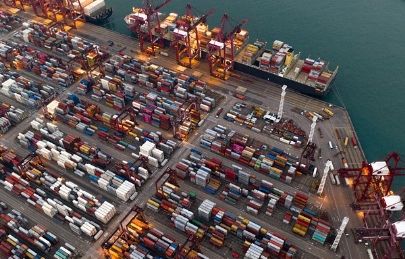What Is a Trade Gap?
A trade gap, also known as a trade deficit, occurs when a country's imports exceed its exports during a specific period. This economic condition reflects the balance of trade between a nation and its trading partners and is an essential indicator used by economists to assess the health of a country's economy in the global market.

Understanding the Trade Gap
1. Calculation: The trade gap is calculated by subtracting the value of a country’s exports from its imports. If the result is negative, the country has a trade deficit; if it’s positive, the country enjoys a trade surplus.
2. Components:
• Imports: Goods and services purchased by residents of a country from foreign countries.
• Exports: Goods and services sold by a country to customers outside its borders.
Implications of a Trade Gap
1. Economic Impact: A trade deficit can have varied implications. Short-term deficits may not necessarily be harmful if they are used to import capital goods that enhance productivity. However, long-term deficits could be problematic, potentially leading to debt accumulation.
2. Currency Valuation: Large and persistent trade deficits can put downward pressure on a country's currency, as more of its currency needs to be converted into foreign currencies to pay for imports. This devaluation can make imports more expensive and exports cheaper, potentially self-correcting the deficit over time.
3. Interest Rates and Inflation: A weakening currency can lead to higher import prices, contributing to inflation. To combat this, central banks might raise interest rates, which can affect economic growth.
Real-World Examples of Trade Gaps
1. United States: Historically, the U.S. has experienced significant trade deficits, particularly with China. In recent years, this gap has been a focal point of trade discussions and policy changes, including tariffs and trade agreements aimed at reducing the deficit and promoting domestic industries.
2. China: Contrasting the U.S., China has often recorded trade surpluses, exporting more than it imports, particularly in manufactured goods. This surplus has enabled China to accumulate large reserves of foreign currencies, which can be strategically used for international investments and enhancing its economic influence globally.
3. Germany: Known for its strong export economy, particularly in automobiles and machinery, Germany has frequently posted trade surpluses. These surpluses have sometimes led to criticisms from other European Union countries, arguing that Germany’s economic policies unfairly benefit at the expense of neighboring economies.
Strategic Considerations
1. Economic Policy Adjustments: Policymakers might use currency devaluation, tariffs, or subsidies to influence the trade balance. Adjusting interest rates can also impact domestic consumption patterns and import demand.
2. Industry Support: Governments may support key industries to boost exports or replace imports with local products, aiming to narrow the trade gap.
3. Negotiating Trade Agreements: Negotiating favorable trade agreements is crucial for improving a nation's export opportunities and addressing structural trade imbalances.
Conclusion A trade gap is a critical economic indicator that reflects the difference between a country's imports and exports. While often viewed negatively, trade deficits are complex and can result from various economic factors. Effective management of the trade gap requires comprehensive understanding and strategic policy interventions that consider both domestic economic conditions and international trade dynamics.
Related articles

 WeChat of CBiBank
WeChat of CBiBank